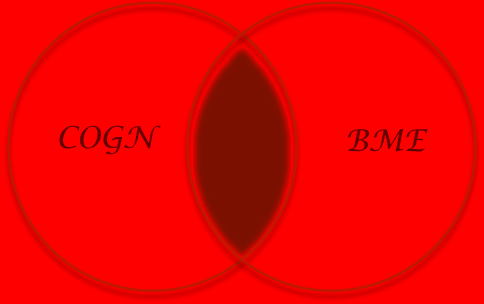- français
- English
Nbci

Neuroscience & Brain-Computer Interfaces (NBCI)
Thursdays, 11:15 am, SV 3.615
This group brings together researchers from cognitive neuroscience and biomedical engineering with a common interest in developing and supporting the use of BCI technology as a tool for cognitive neuroscience research. We also look for ways that BCI-fueled cog-neuro research might stimulate and contribute to the evolution of BCI technology. The group is also dedicated to building synergy between the Blanke and Millán research teams by stimulating and supporting collaborative projects.
The NBCI group is organized by Aaron Schurger (aaron.schurger@epfl.ch) and Maria Laura Blefari (marialaura.blefari@epfl.ch). The group meets every three weeks (or occasionally more often) on Thursday at 11:15 am in SV 3.615 (or as specified in the e-mail announcement).
FIRST MEETING: Thursday 30th January, 2014 Maria Laura Blefari
The first meeting was held on Thursday the 30th of January, 2014 in SV 3.615. Maria Laura Blefari presented her ongoing work on “Brains of proficient and less-than-proficient BCI users: what is the difference?” We also discussed the organization of the meetings. The majority favored meeting every four weeks, while a minority favored meeting every two weeks.
SECOND MEETING: Thursday 27th February, 2014 Aaron Schurger, Steven Gale,Olivia Gozel
THIRD MEETING: Thursday 27th March, 2014 Silvia Marchesotti
Silvia Marchesotti presented data from her fMRI study in which she recorded fMRI data while subjects controlled an EEG-based BCI. She used both standard GLM analyses and multi-voxel pattern classification to investigate the neural correlates of feeling of control over the BCI (agency) and of actual control over the BCI.
FOURTH MEETING: Thursday 17th April, 2014 Sion group (Bassolino, Leeb, et al)
A BCI approach combining EEG recording (during a task consisting in attempt to perform a wrist extension) and feedback delivered through Functional Electrical Stimulation (FES) is used in a 5-weeks training for chronic patients with upper-limb hemiplegia after stroke at multiple clinical centers (SUVA in Sion and HUG in Geneva). Motor, sensory and neuropsychological outcomes were evaluated through standard clinical tests, comparing the findings obtained in an experimental and control group.
FIFTH MEETING: Thursday 8th May 2014 Stephanie Martin
People suffering from paralysis or aphasia often cannot communicate, but some may still be able to imagine the sequence of words and phrases that they would like to communicate. Most BCI studies have focused on the somatomotor systems involved in controlling the limbs, but very few (if any) studies have focused on the systems for producing speech (also a somatomotor system). Stephanie will present her prior work aimed at decoding continuous features of imagined speech using electrocorticography. This work will contribute to the future development of speech-based BCIs (invasive or non) and will also contribute significantly to understanding the way that speech is encoded in the brain. In particular this work may inform our understanding of the neural mapping between imagined speech sounds, imagined speech production, and motor articulation of speech.
